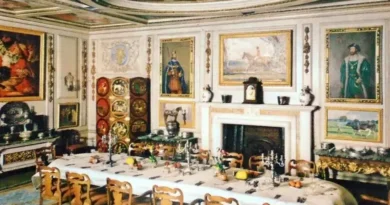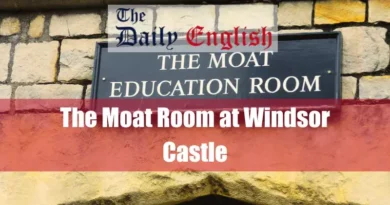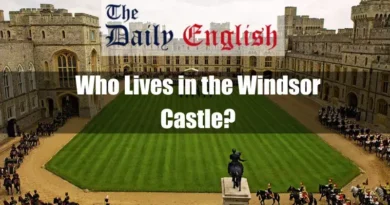I. Introduction
For centuries, Windsor Castle has been home to a unique group of canine companions known as the “Windsor Castle Dogs.” These dogs haven’t been a single breed, but rather a collection reflecting the changing preferences and needs of the Royal Family.
Pembroke Welsh Corgis became synonymous with the dogs in recent times, thanks to Queen Elizabeth II’s lifelong love for the breed. Her corgis descended from a gift she received in 1944, were her constant companions, offering emotional support and a touch of informality during public appearances.
However, the history of Windsor Castle dogs stretches back much further. Records suggest hounds were used for hunting purposes during King Henry VIII’s reign. At the same time, terriers might have been present for vermin control. Queen Victoria, for instance, also owned dachshunds, collies, and pugs.
Windsor Castle’s canine companions, once dominated by Queen Elizabeth II’s beloved corgis, now face an uncertain future. While her remaining corgis reside with Prince Andrew, it’s still being determined if corgis will remain the royals’ breed of choice. Nevertheless, these dogs, from Queen Victoria’s terriers to Henry VIII’s hunting hounds, represent a rich history of human-animal companionship within the castle walls.
II. Definition: What are “The Windsor Castle Dogs”?

The term “The Windsor Castle Dogs” doesn’t refer to a specific breed or a dedicated working group. Instead, it encompasses all the canine companions that have graced the grounds of Windsor Castle throughout history. These dogs belong to the British Royal Family, offering companionship, emotional support, and sometimes even playing working roles.
While the exact origins of dogs at Windsor Castle are unclear, historical records and paintings suggest their presence for centuries.
Also, read:
- The Grand Reception Room at Windsor Castle
- The Queen’s Gallery at Windsor Castle
- The Crimson Drawing Room at Windsor Castle
III. Historical Context: Have there always been dogs at Windsor Castle?

Unfortunately, pinpointing the exact date dogs arrived at Windsor Castle is difficult. However, there’s evidence suggesting their presence for a significant period.
A 1603 portrait of Queen Elizabeth I depicts her surrounded by several terriers, hinting at the long-standing relationship between the royals and their canine companions.
Historical records from the reign of King Henry VIII (1509-1547) mention payments made for the upkeep of hounds, suggesting the use of dogs for hunting purposes.
While these are just a few examples, they showcase the long-established presence of dogs at Windsor Castle, playing various roles within the royal household.
IV. Breeds of Dogs at Windsor Castle

A. Confirmed Breeds
1. Dogs Documented as Belonging to the Royal Family
The breed most famously associated with the Windsor Castle dogs is the Pembroke Welsh Corgi. Queen Elizabeth II’s lifelong love for the breed made them a prominent part of royal life for over 70 years. Her corgis descended from Susan, a gift she received on her 18th birthday in 1944. Notably, the Queen also bred “dorgis,” a dachshund-corgi mix. https://www.countryliving.com/uk/wildlife/dog-breeds/g39182490/royal-dog-breeds/
2. Breeds Associated with the Castle Throughout History
Beyond corgis, historical records and artwork offer glimpses into other breeds that might have been present at Windsor Castle:
- Terriers: The aforementioned paintings of Queen Elizabeth I suggest terriers were part of the royal canine companions as early as the 16th century. King Edward VII (1901-1910) was particularly fond of terriers, with breeds like Jack Russell terriers documented as his favourites.
- Hounds: Records from King Henry VIII’s reign mention the upkeep of hounds, likely used for hunting purposes. Specific breeds of hounds used are not documented. Still, historical hunting practices in England suggest breeds like Foxhounds and Beagles could have been present.
- Other Breeds: While less prominent, there might have been other breeds at Windsor Castle throughout history. Queen Victoria, for example, was known to have owned dachshunds, collies, and pugs. https://www.rct.uk/
B. Unidentified Breeds
Identifying the exact breeds of dogs present at Windsor Castle in earlier historical periods can be challenging.
- Limitations of Historical Records: Early records often focus on the function of the dogs (e.g., hunting hounds) rather than specific breeds.
- Challenges with Paintings: Paintings can offer clues. However, breed identification can be imprecise due to artistic license or limitations in capturing details.
Therefore, while historical references suggest a variety of breeds graced Windsor Castle, pinpointing the exact types in many cases might not be possible.
Also, read:
V. Roles of the Windsor Castle Dogs

The roles of the Windsor Castle dogs have evolved throughout history, primarily focusing on companionship and, in earlier times, working duties.
A. Companionship
The most prominent role of the Windsor Castle dogs, particularly recently, has been companionship for the Royal Family. Queen Elizabeth II’s unwavering love for her corgis is a prime example. These dogs provided her with emotional support, constant presence, and even lighthearted moments during official duties. Newsreels and photographs often depicted the Queen surrounded by her corgis, solidifying their place as cherished companions. https://nypost.com/1999/07/22/buckingham-booze-hounds-queen-bites-aide-who-got-corgis-drunk/
Beyond the Queen, other members of the Royal Family have also found solace and enjoyment in their canine companions. For instance, pictures of the Duke and Duchess of Cambridge walking their dog Lupo, a cocker spaniel, showcased the importance of dogs within the broader royal household. https://www.yahoo.com/entertainment/prince-william-kate-middleton-dog-lupo-dead-184020772.html
B. Working Roles
While companionship has become the primary role, historical records suggest working duties for some Windsor Castle dogs in the past.
- Hunting Companions: Records from King Henry VIII’s time mention hounds, likely used for hunting purposes. While hunting is no longer a royal pursuit, these records highlight a past role for some Windsor Castle dogs.
- Guarding Duties: There needs to be more information on the specific use of dogs for guarding purposes at Windsor Castle. However, considering the historical role of dogs in guarding property, some breeds might have played this role in the past. Modern security systems have likely rendered this function less necessary.
- Vermin Control: While undocumented, the presence of terriers in earlier periods suggests a potential role in vermin control within the vast castle grounds. However, this is purely speculative based on the known working abilities of terrier breeds.
Companionship has recently become the defining role for the Windsor Castle dogs. However, historical records hint at past working roles like hunting and potentially guarding or vermin control. The Queens of England and Queen Elizabeth II all had a fondness for dogs at Windsor Castle. Historical records suggest hounds for hunting and terriers for vermin control, while Queen Elizabeth II’s lifelong love for Pembroke Welsh Corgis made them iconic royal companions.
Also, read:
- The State Courtyard, Windsor Castle
- The Semi-State Rooms, Windsor Castle
- The Royal Great Kitchen, Windsor Castle
VI. Famous Windsor Castle Dogs

Defining “famous” for Windsor Castle dogs can be subjective. However, some criteria can help identify notable canine residents:
- Loyalty and Companionship: Dogs who formed particularly strong bonds with specific members of the Royal Family.
- Public Favourites: Dogs who capture public attention through media appearances or documented anecdotes.
- Historical Significance: Dogs who played a role in historical events or represented a shift in the tradition of Windsor Castle dogs.
Based on these criteria, here are some profiles of famous Windsor Castle dogs:
A. Susan (Queen Elizabeth II’s Corgi)
Significance: Susan, a Pembroke Welsh Corgi gifted to the Queen on her 18th birthday in 1944, is the foundation of the Queen’s lifelong love for the breed. She descended from Susan, and many of the Queen’s beloved corgis were Susan’s descendants. https://www.countryliving.com/uk/wildlife/dog-breeds/g39182490/royal-dog-breeds/
B. Holly, Willow, Whisper, and Candy (Queen Elizabeth II’s Corgis and Dorgis)
Significance: These represent some of the Queen’s most recent canine companions. Holly, a corgi, sadly passed away in 2016. In her later years, Willow, Whisper (another corgi), and Candy (a dorgi) were the Queen’s companions.
C. Dash (Queen Victoria’s Spaniel)
Significance: Queen Victoria, known for her love of animals, had many canine companions. Dash, a spaniel from her childhood, was documented in paintings and is considered a notable part of her early life. https://www.rct.uk/collection/stories/royal-pets
D. Jack and Caesar (King Edward VII’s Terriers)
Significance: King Edward VII was particularly fond of terriers, with Jack and Caesar documented as his favourites. These dogs were featured in photographs, and Fabergé models were commissioned, highlighting their place in the King’s life.
It’s important to note that this is not an exhaustive list. Many other dogs have undoubtedly played cherished roles as companions to the Royal Family throughout history. However, these examples showcase some of the notable canine residents of Windsor Castle.
Also, read:
- The State Dining Room, Windsor Castle
- The Moat Room at Windsor Castle
- The China Museum, Windsor Castle
- The Waterloo Chamber, Windsor Castle
VII. Daily Life of the Windsor Castle Dogs Today

Following the passing of Queen Elizabeth II in September 2022, the landscape of the Windsor Castle dogs has undergone some changes.
Here’s what we know about the current situation:
A. Care and Exercise
There’s limited publicly available information on the specific routines of the remaining Windsor Castle dogs. However, some general details can be gleaned from past reports:
- Responsibility: Traditionally, a dedicated team of dog walkers and caretakers looked after the Queen’s corgis. Whether this structure remains in place for the remaining dogs is still being determined.
- Exercise and Veterinary Care: News articles and photographs depict the Queen’s corgis enjoying walks on the extensive grounds of Windsor Castle. It’s safe to assume the remaining dogs continue to receive regular walks and proper veterinary care.
B. Accommodation
Details on the precise living quarters of the Windsor Castle dogs are unavailable. However, some possibilities can be considered:
- Royal Residences: The Queen’s corgis historically resided in dedicated quarters within the royal residences, like Buckingham Palace and Windsor Castle. Whether the remaining dogs continue to live within the Castle itself is unknown.
- Alternative Accommodations: The dogs might reside in dedicated kennels on the Windsor Castle grounds or even be housed with members of the Royal Family.
1. Changes since the Queen’s Passing
Queen’s Corgis: The Queen’s two remaining corgis, Holly and Candy, reportedly went to live with Prince Andrew after her passing. https://www.theguardian.com/uk-news/2022/sep/19/four-legged-farewells-queens-corgis-and-pony-attend-funeral-procession
2. Uncertainties
Future of the Tradition: With the Queen’s passing, the future of keeping corgis as prominent companions within the Royal Family remains to be seen.
While specifics are limited, it’s evident that the remaining Windsor Castle dogs continue to receive proper care and enjoy a comfortable life.
Also, read:
- Are Dogs Allowed into Windsor Castle
- Comparing Shops Near Windsor Castle
- The Mystery of 2 Windsor Castles
VIII. The Windsor Castle Dogs and the Public

The dogs of Windsor Castle have garnered significant public interest over the years. Let’s explore how the public perceives them and their accessibility.
A. Public Perception
The Windsor Castle dogs are generally viewed with fondness by the public. Here’s why:
- Cuteness Factor: Corgis are undeniably adorable with their short legs and fluffy bodies. The Queen’s corgis, in particular, became media stars, generating positive public sentiment towards the Windsor Castle dogs.
- Symbol of Comfort: The dogs’ role as companions to the Royal Family resonates with the public’s appreciation for the human-animal bond. Seeing the royals interact with their dogs offers a relatable and heartwarming aspect to their lives.
- Historical Connection: The long-standing presence of dogs at Windsor Castle adds a layer of historical intrigue. The public is fascinated by the changing roles of these dogs throughout history.
B. Accessibility
Unfortunately, unlike Buckingham Palace, which has set visiting hours for the public to see the Queen’s Guard, the Windsor Castle dogs are not readily accessible to the general public.
- Limited Public Appearances: The dogs are primarily private companions to the Royal Family and rarely make public appearances.
- Security Concerns: Windsor Castle is a functioning royal residence, and security considerations likely restrict public access to areas where the dogs might reside.
However, there are some indirect ways the public can connect with the Windsor Castle dogs:
- Media Coverage: News articles, documentaries, and photographs featuring the dogs offer glimpses into their lives.
- Social Media: The Royal Family’s official social media channels might occasionally share photos or stories about the dogs.
It’s important to note that while the public can’t directly see the Windsor Castle dogs, there are dog-related events held near Windsor Castle:
The Windsor Championship Dog Show: This prestigious event is held annually to showcase various dog breeds and might interest dog enthusiasts visiting the area.
While the public can’t directly interact with the Windsor Castle dogs, their presence captures the imagination, highlighting the enduring bond between humans and their canine companions.
Also, read:
- 10 Best Dog-Friendly Restaurants at Windsor
- How Deep is the River Thames? Exposing the River Thames?
IX. Conclusion: The Significance of the Windsor Castle Dogs

The dogs of Windsor Castle have held a unique place in British royal history for centuries. Their presence transcends mere companionship, offering a glimpse into the human-animal bond within the Royal Family and reflecting the evolution of royal life.
Their Significance:
- Companionship: From Queen Elizabeth II’s lifelong love for corgis to documented anecdotes of canine companions throughout history, the Windsor Castle dogs have provided emotional support and a constant presence to the royals.
- Historical Reflection: The changing roles of the dogs, from hunting companions to cherished family members, mirror the broader societal shifts in human-animal relationships.
- Public Connection: The dogs have captured public hearts, offering a relatable and endearing aspect of the often-formal Royal Family.
The Future:
With the passing of Queen Elizabeth II, the most famous dog owner at Windsor Castle, the future of the tradition remains uncertain. However, the legacy of the Windsor Castle dogs lives on, reminding us of the enduring bond between humans and their canine companions, even within the walls of a historic castle.
Whether corgis remain a prominent feature of Windsor Castle or new breeds find favour with future royals, the tradition of canine companionship within the British Royal Family is likely to endure. These furry residents will undoubtedly continue to play a cherished role in the lives of the royals and capture the public’s imagination for years to come.
X. FAQs about The Windsor Castle Dogs

A. Did any of the Windsor Castle dogs ever play a role in a royal event?
There are documented instances of Windsor Castle dogs participating in royal events. Here are a few examples:
- Queen Victoria’s spaniel, Dash, frequently appeared in portraits and paintings alongside the Queen. This suggests his presence during official events.
- Newsreels and photographs often captured the Queen’s corgis accompanying her during official duties or public appearances. While not directly participating, their presence added a touch of informality to these events.
- The Queen’s corgis and her pony reportedly stood alongside the procession during her funeral, highlighting their place within the royal family.
B. What training did the Queen’s corgis receive, if any?
- Basic Obedience: The corgis likely received basic obedience training to ensure good manners during walks, public appearances, and interactions with the Queen and staff.
- Housebreaking: As pets living indoors, the corgis would have likely been housebroken to maintain cleanliness within the royal residences.
- Informal Training: The corgis might have learned specific cues or behaviours to navigate their unique environment through daily interactions with the Queen and staff.









